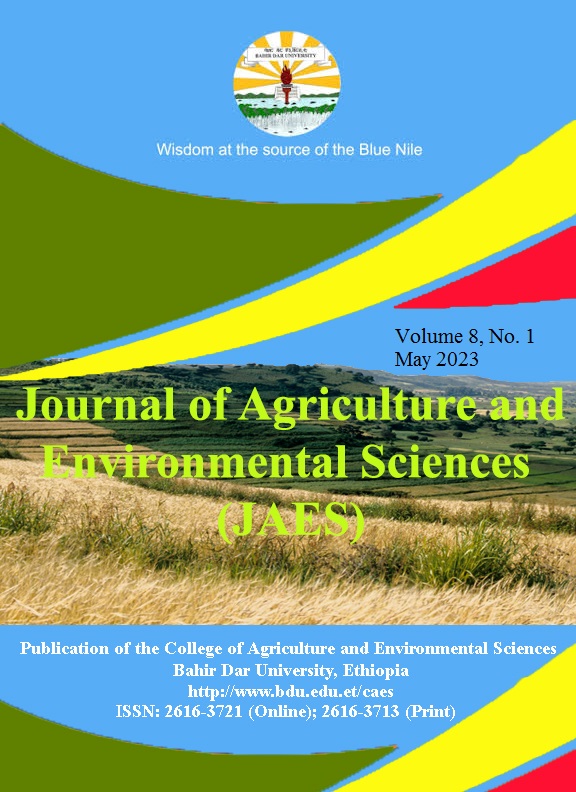Groundwater-recharge estimation in Waja-Golesha Sub-basin, Northern Ethiopia: An approach using WetSpass Model
Abstract
Understanding the spatial variability of groundwater recharge in response to distributed Land-use, soil texture, topography, groundwater level, and hydrometeorological parameters is significant when considering the safety of groundwater resource development. Thus, this study aimed to estimate the groundwater recharge of the Waja-Golesha watershed, in northern Ethiopia using the WetSpass (Water and Energy Transfer between, Soil, Plants, and Atmosphere under quasi Steady State) hydrological model. The model inputs are prepared in the form of 20m grid size maps and attribute tables. The model parameters table was prepared using expert knowledge and scientific literature. The modeling results of long-term spatial-temporal annual rainfall of 664.5 mm were fractionated as 161.5 mm (24%) of runoff, 438.2 mm (71%) evapotranspiration, and the remaining 29 mm (5%) of groundwater recharge. From the entire area of the sub-basin (532.6 km2), 1.6*105 cubic meters (m3) of water was added to the groundwater through infiltration. The seasonal distribution of the recharge indicates that 72% occurred in the wet season while the rest 28% resulted in the dry season. The evaluation of the modeled output indicates that WetSpass works well to model the groundwater recharge of the Waja-Golesha sub-basin. To preserve the resource's long-term viability, the balance between groundwater recharge and projected abstraction rates for agriculture and domestic water supply must be considered in future groundwater resource development plans in the watershed.
Copyright (c) 2023 Journal of Agriculture and Environmental Sciences

This work is licensed under a Creative Commons Attribution-NonCommercial-NoDerivatives 4.0 International License.
Authors who publish with this journal agree to the following terms:
- Authors retain copyright and grant the journal right of first publication with the work simultaneously licensed under a Creative Commons Attribution License that allows others to share the work with an acknowledgement of the work's authorship and initial publication in this journal.
- Authors are able to enter into separate, additional contractual arrangements for the non-exclusive distribution of the journal's published version of the work (e.g., post it to an institutional repository or publish it in a book), with an acknowledgement of its initial publication in this journal.
Authors are permitted and encouraged to post their work online (e.g., in institutional repositories or on their website) prior to and during the submission process, as it can lead to productive exchanges, as well as earlier and greater citation of published work (See The Effect of Open Access).


